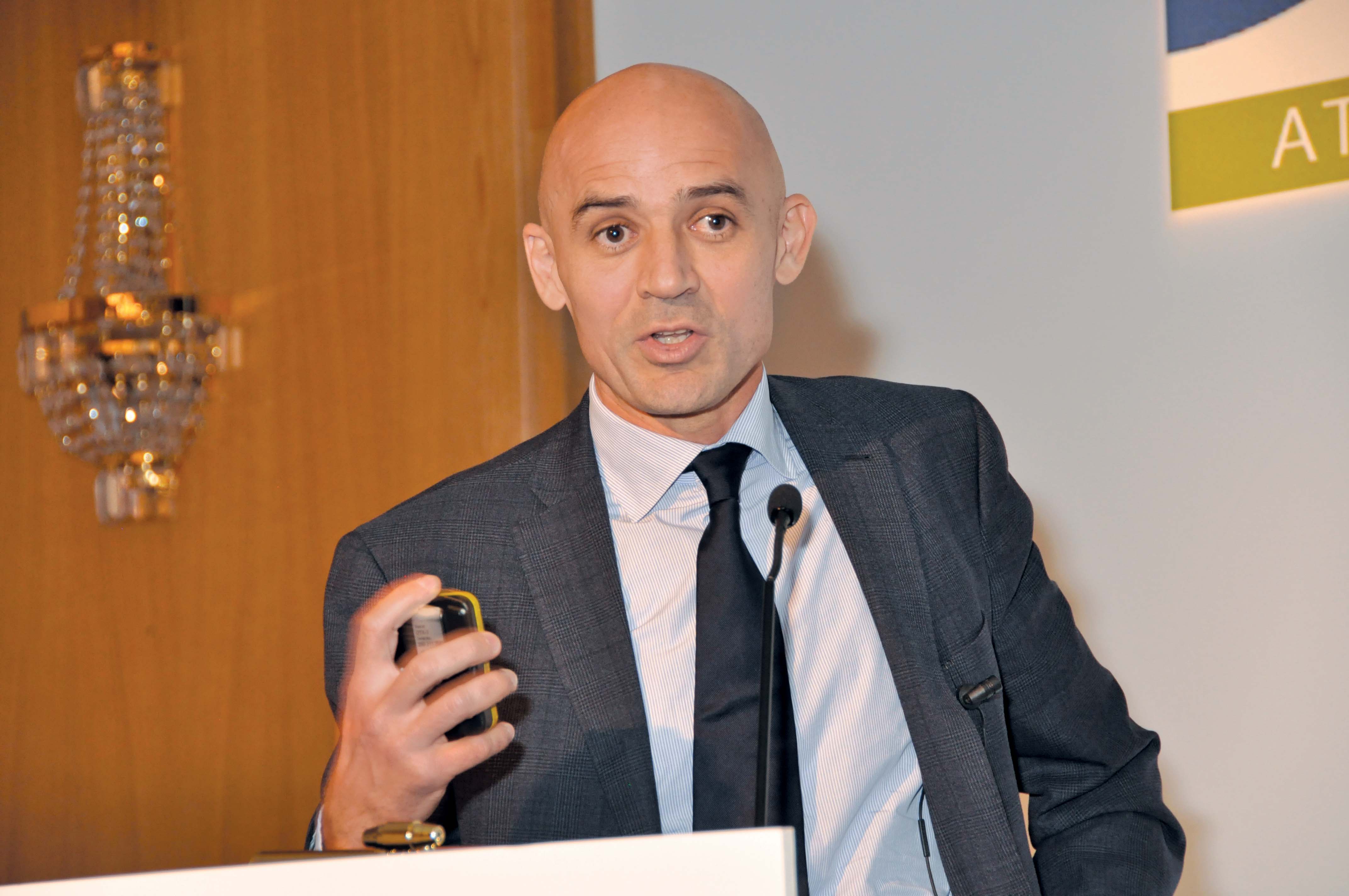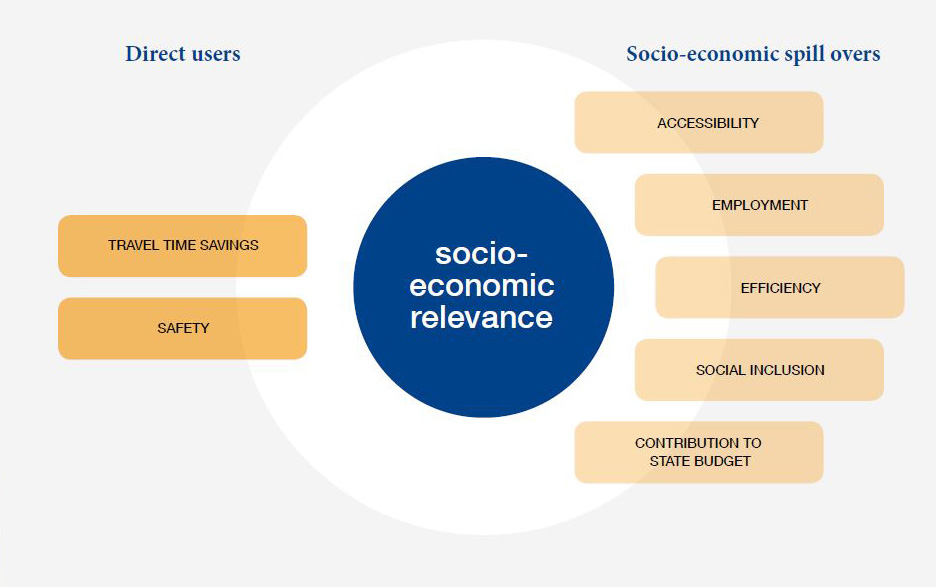At
This legislation, which has yet to be ratified by many EU member states, redefines concessions and specifies that the concessionaire has to carry the project risk, restricts the conditions under which the contract can be modified and limits its duration.
De la Fuente highlighted how authorities and society benefit from using concessions as these have no impact on public finance and implement the ‘User Pays’ principle including the use of roads by foreign drivers. While acknowledging that the concessionaire should bear some of the risk, he stressed that this cannot be unlimited risk as some might interpret the EU regulations. By the long term nature of concessions, they need to be a balance and not only of risks but also of stability and flexibility and that while business favours stability, contracts cannot be respected when fundamental changes occur.
In this last category he highlighted unilateral decisions by either the local or national authority such as building or upgrading a parallel free-use road and imposing new obligations through changing legislation or the basis of taxation. The report says the concessionaire should be compensated for any unilateral decisions that adversely affect the operation of the tolling business.
Also included in this were unforeseen events such as the economic crises that decimate traffic volumes and fundamentally alter the contract equilibrium: “We are not talking of a 5% drop but of big change that render the contract totally unprofitable,” said De la Fuente.
The report also suggests that new schemes with mixed revenue, minimum income guarantees or variable concession periods could be considered for future contracts to make socially desirable projects viable despite limited traffic volumes.
Currently the EU directive specifies that a concession cannot continue past the point where the investment has been repaid along with a reasonable profit for the operator, so the report considers what should happen when a concession ends. It questions whether toll-free public ownership is a sustainable option and suggests a new tender should be launched that incorporates additional investments in the facility, and others in the area, as well as the long term maintenance of the concerned infrastructures.
This raises the issue of the ‘Adossement’ system – whereby toll revenue is used to support other nearby road schemes, something which the report suggests should be promoted through a review of the legal framework.
De la Fuente went on to assert that while authorities continue to face budgetary constraints there remained a continuing need for investment in the road transport infrastructure, so there was a need for more toll roads and concessions. He suggested that public-private partnerships (PPPs) could be an ideal source of funding but added that the Eurostat criteria needed to be clarified to state that concession projects have no impact on public deficits.
These last two points were picked up in the subsequent panel session by Guy Chetrit of the European Investment Bank. He told the conference that of 50 PPPs for building motorways the bank had monitored in the last five years, only five were related to real toll concessions and none had been signed in the last two years. “PPPs are not the right vehicle for funding toll road construction as a PPP needs certainty,” said Chetrit.
Indeed, uncertainty has been increased by Directive 23/2014/EU which requires the concessionaire has to accept the risk of failure but Chetrit told ITS International it was far too early to know if this was deterring potential concessionaires from bidding for contracts.
He told his audience that there was plenty of liquidity around but there was “a lack of good opportunities for the money that is out there to be invested. Why? Because there is a funding, not a financing, issue which is ‘has the economy and society as a whole the ability to repay? Is it affordable for the government, society or the users of the infrastructure to actually pay for those investments - because at the end of the day somebody has to pay.”
Moving onto the Eurostat criteria, he said: “If PPPs are on the balance sheet then there is a reason which is because the government has made a number of undertakings for the long term and has committed to make payments or provide guarantees. So in a way it is probably quite fair that those liabilities and undertakings are reflected in the accounts of government.
“If your objective is that your projects do not appear on public finance balance sheets then there must be no management or fiscal liabilities on the government from these contracts. In the past this has led to some very nasty situations that can put your body’s finances at a lot of risk.”
Fellow panel member José Viegas, who is secretary-general of the International Transport Forum, made the point that it was impossible to predict what changes would happen in the 20 years of a concession contract. He identified four ‘certain’ changes over that time period starting with digital connectivity and electrification which “will strongly reduce if not cancel fuel duties – which are a major component of the state budget. In our countries, fuel duties represent 6% and in some cases 12% of the total state revenue, so this is something the state cannot afford to give away – it has to be replaced. Most probably this will be replaced by road charges for all vehicles on all roads.”
A second major factor was the combination of the shared economy and autonomous vehicles which he said, “will see an increase in ride sharing and very probably new forms of small-scale public transport which will impact the number of vehicle kilometres on the roads.”
His third point was the fight against urban congestion and he highlighted Oslo’s plans for zero private cars in the city centre starting in 2018. “Putting this all together, the object of the concession will no longer be a ring-fenced piece, it has to be a network of roads of different natures – sometimes involving construction and upgrades and certainly maintenance.
“Finally, the revenue will probably not come from vehicle kilometres because there is no stimulus to increase vehicle kilometres, you have to provide mobility. So the contracts will be more abstract – on the provision and quality of mobility and access. Digital connectivity will make quality much easier to measure with different indicators [that show] how well you are providing this.”
Addressing the audience directly he said: “I suggest that your companies in this association should not forget to look into the future because I am certain many components of this will come much earlier than you think.”
That the tolling sector can be forward-looking was evident in a session on radio frequencies where tolling companies have a vested interest. Marco Jandrisits of
However, other devices including wireless camera systems, video streaming from drones and wireless radar sensors use the same waveband. In fact there are some 30 million such devices in Europe and the speaker raised concerns that digital tachographs will soon join the list too and that interference may cause disruption to the tolling equipment.
“Transport policy like EETS [the European Electronic Tolling Systems] and interoperability are recognised but not taken into account in terms of how important this frequency is for us,” said Jandrisits. “The situation has changed and will change dramatically in the coming years with the introduction of ITS G5 and just recently the car manufacturers have announced they want to introduce Wi-Fi in cars. The telecommunications industry has also started a big push to put more bandwidth into RLAN.”
Both of these plan to utilise bandwidth from around 5.72GHz and extending through to almost 5.88GHz, not only engulfing the tolling tag spectrum but also using higher output levels.
In readiness for this eventuality, two Asecap members (French tolling company Autoroutes and
Asecap is contributing to the radio frequency standardisation and regulation activities within the EU. Its next Study and Information Days event will take place in Paris from 29 to 31 May 2017.
Autonomous impact
During a session on automated driving, ITS International questioned Claire Depré, head of the ITS Unit at
Depré said: “Have we calculated the impact? The answer, I think, is ‘No’. Automation is not just about solving the technicalities of the vehicles – it is much broader. Our aims set out in the white paper are about mobility and modal efficiency which is why we started with connected rather than automated vehicles. We are doing a lot of work in support of multimodal travel information and when we started on the C-ITS path we wanted to make sure we were not only making the driver more comfortable in their car.
“So when we are looking at the list of systems for Day 1 or Day 1.5 deployment we are trying to put these in the broader context of multimodal integration which means park and find another mode of transport when it makes sense. We need to start a dialogue about the impact in the urban environment and how cities can make use of it [C-ITS].
“The last thing we want to do is bring in technologies that have the adverse effect and instead of improving the situations it makes things worse.”
Regarding the security aspect she said: “It would be stupid to say you can get 100% security… but our objective and duty is to create a system that, as far as possible, is tamper proof and avoids hijack and prevents unlawful use of these technologies.”
Op de Beek added: “We can’t stop these developments, they will come anyway. By using the approach of learning through experience we can adapt the legislation in such a way that we learn together what is acceptable for the people and governments.
“We support automated driving for the increase in safety but if it creates additional traffic we have to think how we can avoid this. Of course it would give more opportunities for elderly or disabled people to travel more, on the other hand what we see is that if we can get automated public transport you can increase the frequency because a major cost is with the driver. If we can make the vehicles on standard routes drive automatically we can make areas of the city only for automatic vehicles and stimulate these developments for public transport.”
Regarding platooning trucks he said the saving for the operator is in the drivers’ time because they can rest when they are not the lead driver and that takes care of their statutory breaks and rest periods. Platooning trucks also burn less fuel and therefore create less CO2 - between a 12% and 15% reduction, according to Op de Beek. “This is again where we need to learn by experience so we don’t have all the answers yet,” he said.
In relation to security concerns,











